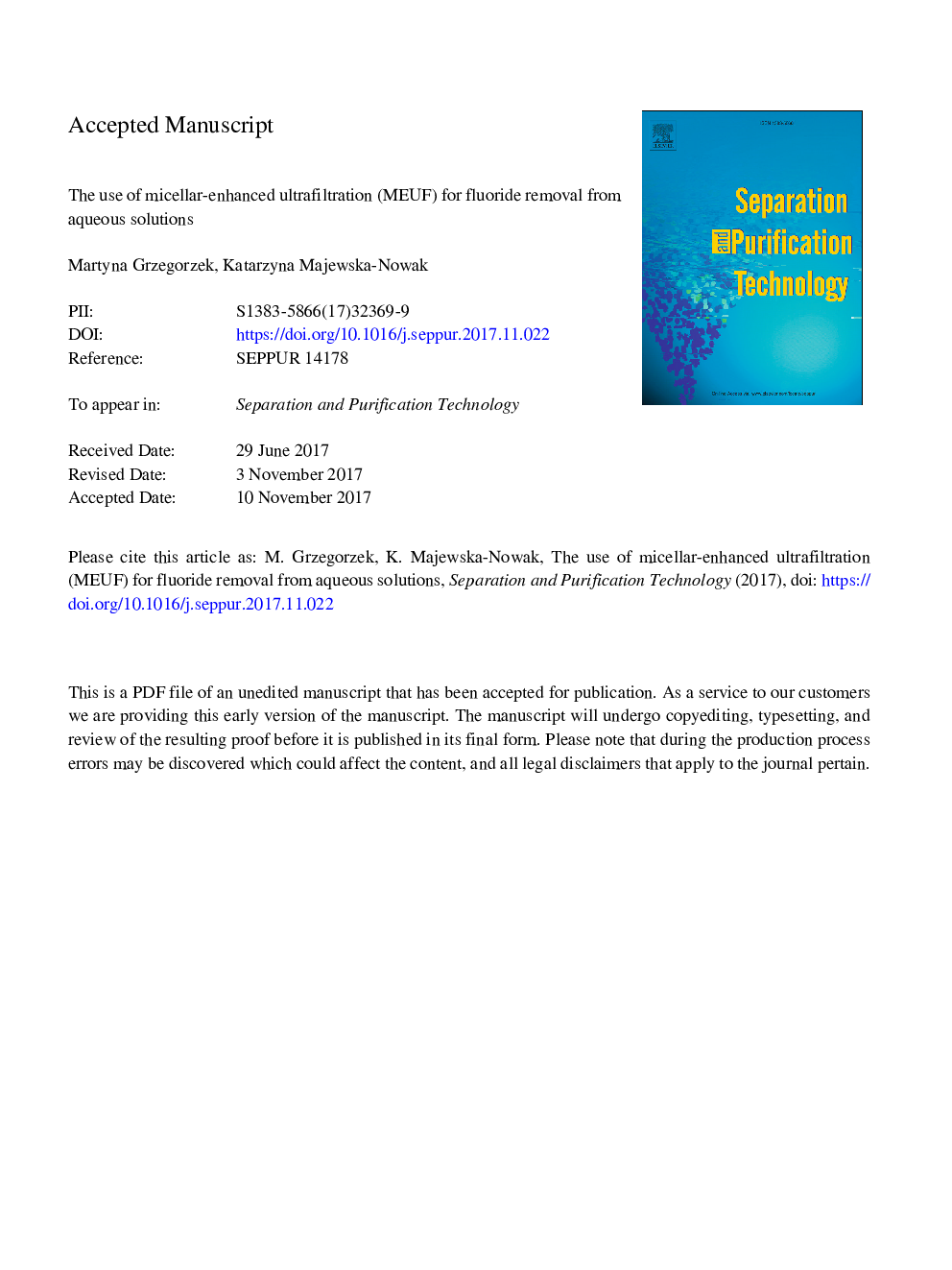| Article ID | Journal | Published Year | Pages | File Type |
|---|---|---|---|---|
| 7043996 | Separation and Purification Technology | 2018 | 19 Pages |
Abstract
Fluorine is a common chemical element. Due to the harmful influence on human health, the World Health Organization determined the permissible level of fluoride in drinking water to be 1.5â¯mgâ¯Fâ/L. Fluorine can be removed from water solutions by various methods (i.e. ion-exchange, precipitation, adsorption and membrane techniques). One membrane technique that can be effective in fluoride removal is micellar enhanced ultrafiltration (MEUF). This method involves the ability of surfactants to create micelles, which are retained by classic ultrafiltration membranes. In the presented paper, the suitability of the MEUF process for fluoride removal was verified. Polyethersulfone and regenerated cellulose ultrafiltration membranes, as well as two cationic surfactants (cetylpyridinium chloride - CPC, octadecylamine acetate - ODA) were used in the batch experiments. The fluoride content in the model solutions amounted to 10 and 100â¯mgâ¯Fâ/L, whereas surfactant concentration varied in the range of 1-3 CMC. The MEUF tests were performed under a pressure of 0.2â¯MPa with and without a salt (NaCl) dosage to the treated solutions. The results obtained showed that for a low fluoride content (10â¯mgâ¯Fâ/L) and a high CMC value (3CMC), the polyethersulfone membrane allowed Fâ ions below the permissible level for drinking water to be removed. The presence of NaCl in the model solutions resulted in a significant worsening of fluoride removal efficiency.
Related Topics
Physical Sciences and Engineering
Chemical Engineering
Filtration and Separation
Authors
Martyna Grzegorzek, Katarzyna Majewska-Nowak,
